When it comes to camping, there are two primary schools of thought: camping and glamping. Camping is the more traditional option, involving pitching a tent and roughing it in the great outdoors.
Glamping, or glamorous camping, is a more luxurious form of camping, often involving RV camping or staying in huge, furnished tents.
So, which option is right for you? Let’s clear up the confusion and look at some key differences between camping vs glamping.
What is glamping?

Glamping is a portmanteau of “glamorous” and “camping.” It’s a popular way of enjoying the wild without giving up your comfort amenities; we can view it as upscale camping.
Glamping sites are usually located in scenic areas, like national parks or near lakes. They often include luxe tents or yurts, queen-size beds, en-suite bathrooms, and complimentary breakfast.
What is camping?
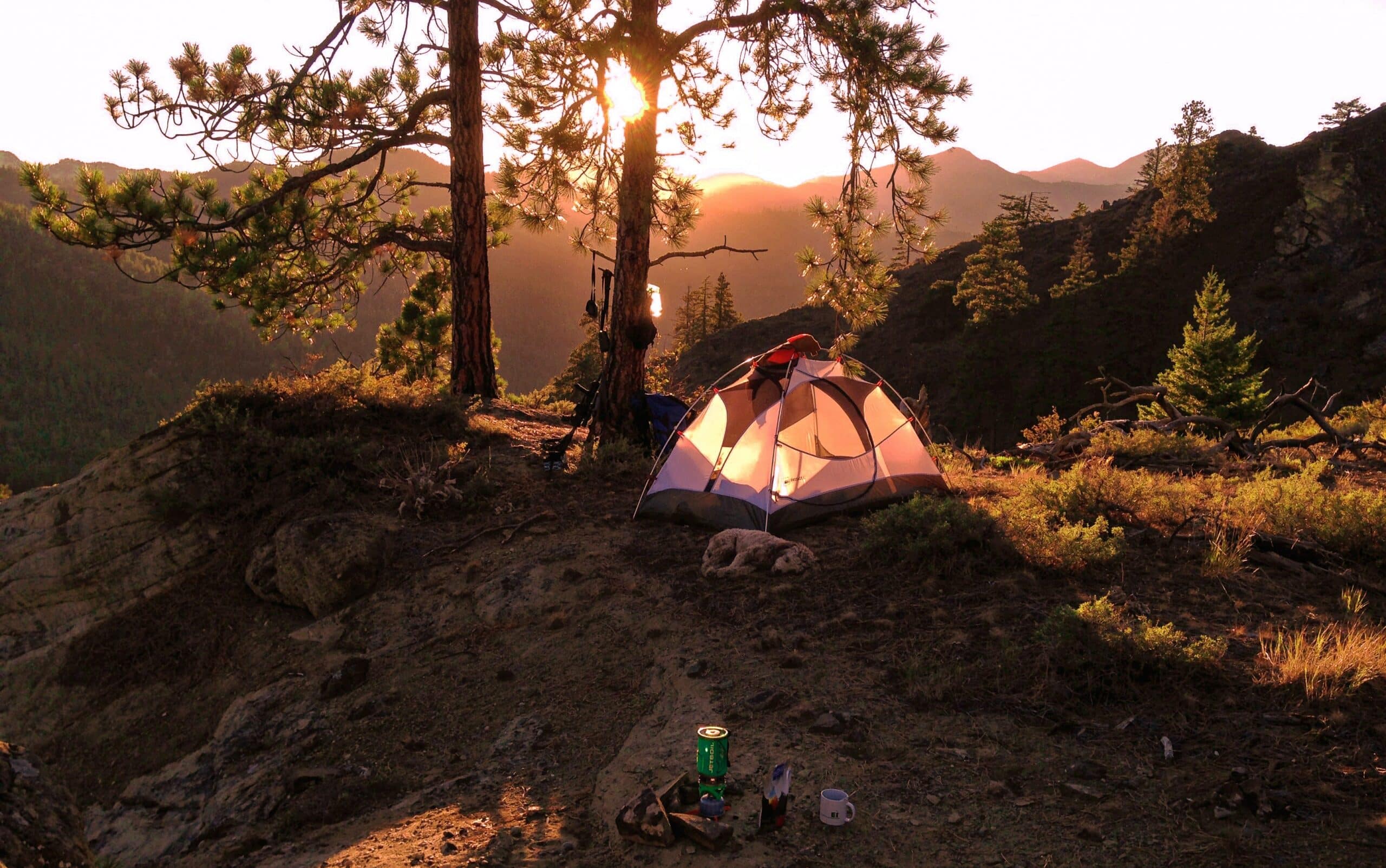
Camping, often called tent camping, is a more traditional way to experience nature. It usually involves pitching a tent on a camping ground and sleeping on a camping mattress or sleeping bag.
Camping grounds are usually located in areas of natural beauty, like national parks or near lakes. They often have basic amenities like toilets and showers.
Though camping isn’t limited to designated campgrounds, after all. There are many different types of camping. For example, you can also head somewhere remote where no amenities or people are around. This wild camping style is called dispersed camping.
Camping vs glamping: Main differences
Now that you know what camping and glamping are, let’s jump straight into the eight key differences to learn the ins and outs of these two camping styles.
1. Location
Camping and glamping typically occur in natural beauty areas, like national parks or near lakes. However, there are some critical differences in the specific locations where you’ll find campsites and glampsites.
Camping grounds are often found in more remote wilderness areas, away from the hustle and bustle of city life. These sites tend to be more rustic, with less infrastructure and fewer amenities. They may be accessible only by hiking or boating and may not have cell phone service or other modern conveniences.
Glamping sites, on the other hand, are often found in more easily accessible locations, such as near popular tourist destinations, and may be found in places closer to towns or cities.
They offer more creature comforts than camping, such as easy access to running water, electricity, and Wi-Fi. Glamping accommodations are often located in picturesque areas, like national parks, near lakes or rivers, and other outdoor recreational areas, with access to outdoor activities and natural beauty.
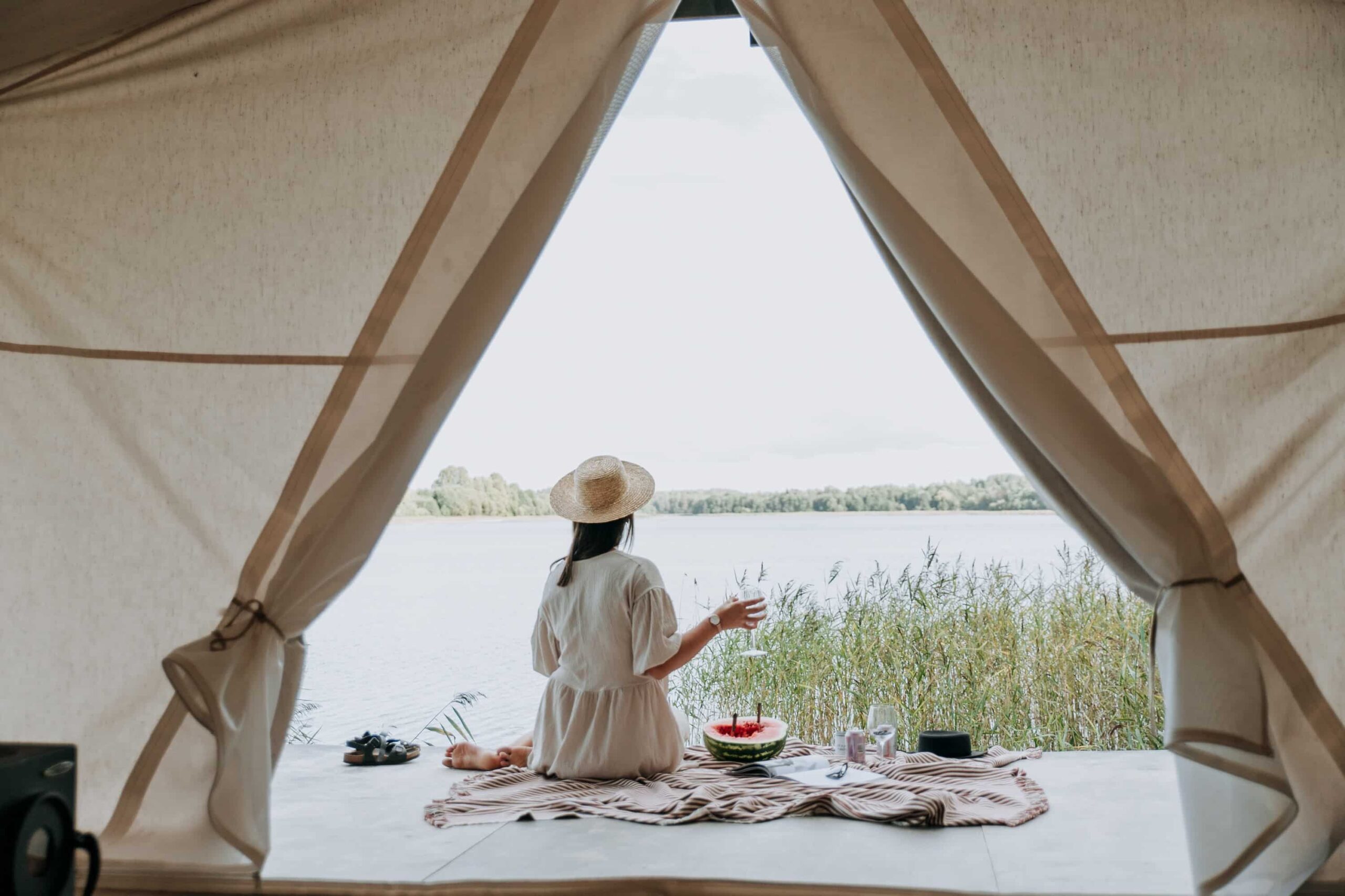
When deciding between camping and glamping, you must consider what kind of location you’re looking for. Camping may be the better option if you’re looking for a more remote wilderness experience. But if you want something more accessible, with more amenities and activities nearby, glamping might be worth a try.
2. Accommodation
Camping typically means roughing it in a tent or an RV. Campsites usually offer space for you to pitch your own tent or park your RV and may have basic amenities like a fire pit, camping table, or bathroom facilities.
You’ll need to bring your camping gear, including a tent, sleeping bags, and camping mattresses. You’ll also need to take care of lighting, cooking equipment, and other necessities.
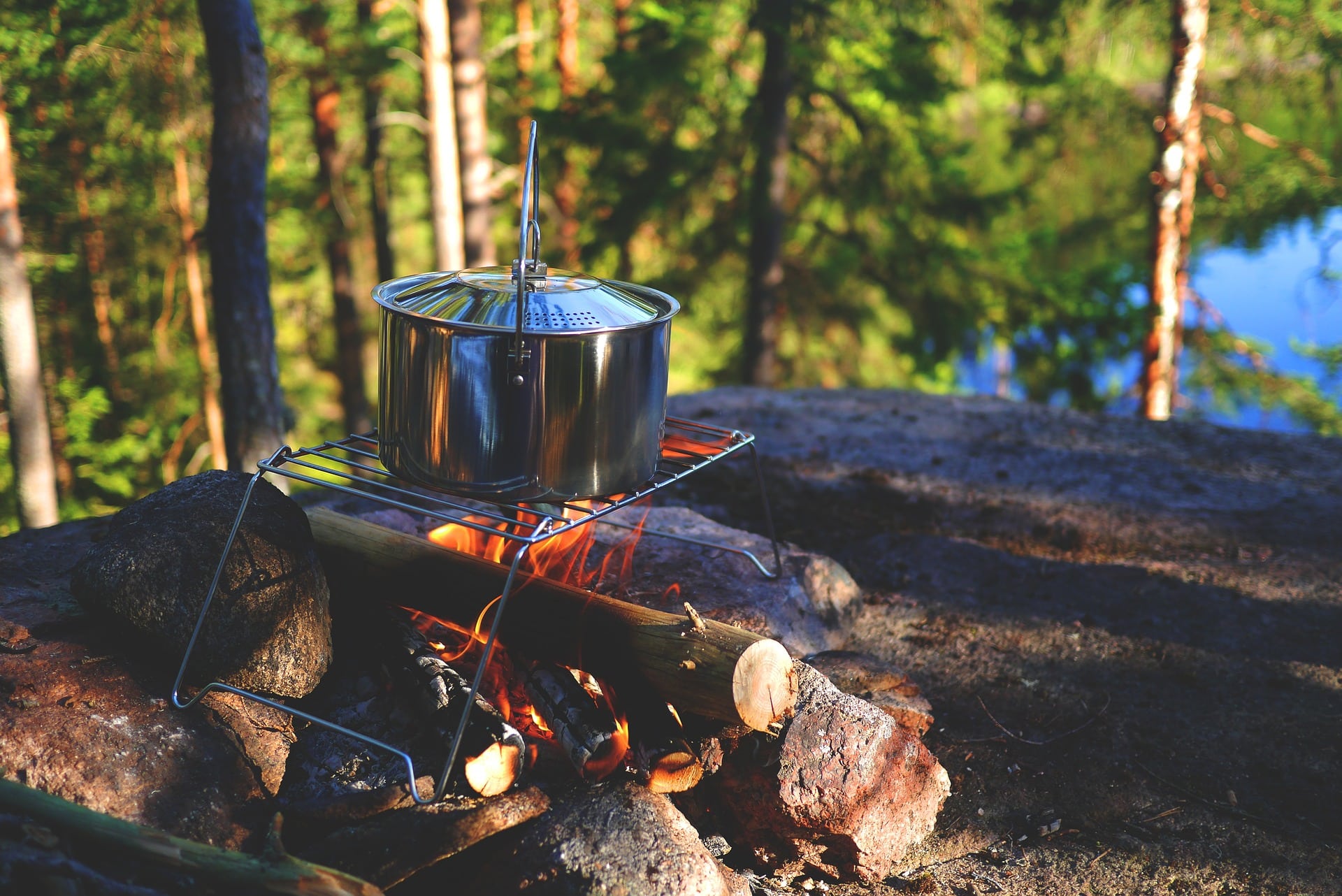
Glamping often includes luxury accommodations such as yurts, tipis, pods, bell tents, and airstream trailers. They’re fully furnished and have features like comfortable beds, electricity, and even en-suite bathrooms.
Glamping sites may also offer additional services such as housekeeping and meal options. Some glamping accommodations may be more rustic, like furnished cabin tents, but others may be more luxurious, like camping cabins, safari tents, yurts, or tree houses.
3. Amenities
When you go camping, you must sacrifice the amenities you are used to at home. As we said, it’s basically up to you to bring your own portable amenities to a campsite. You may also rely on natural resources like streams or lakes for drinking water.
Glamping, however, often offers many amenities similar to those in hotels or resorts. Glamping sites often include running water, electricity, Wi-Fi, housekeeping, and breakfast or dinner options.
You’ll likely find air conditioning, heating, and even private bathrooms in glamping sites. Some glamping accommodations may include luxuries such as hot tubs, private decks, and kitchens.
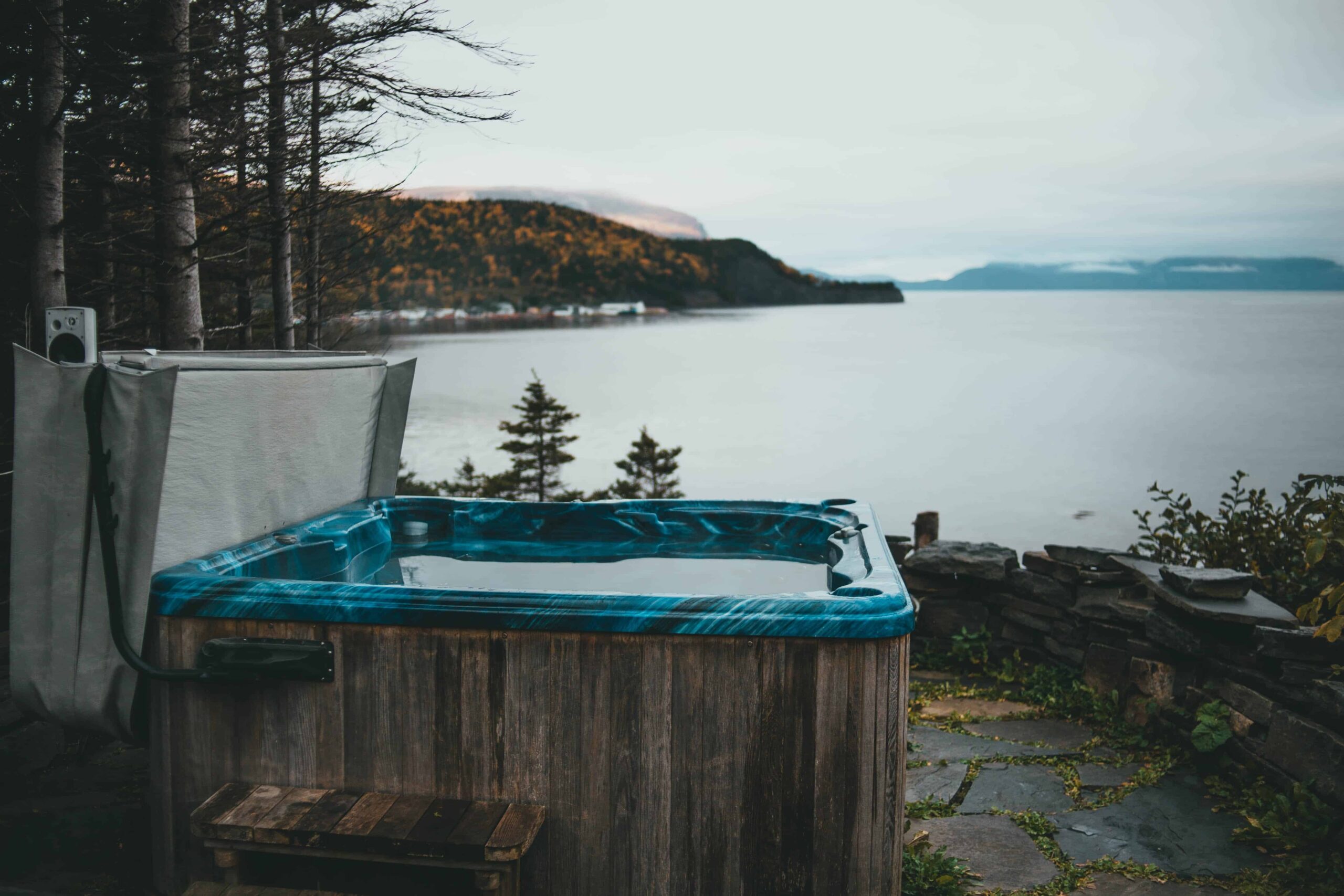
4. Cost
When considering the cost, consider your budget and what you’re willing to spend on your outdoor experience. If cost is a significant concern, camping may be a more budget-friendly option. But if the cost doesn’t matter too much and you aim for more luxury, then glamping is a way to spend your pennies.
Campsites usually charge a fee per night, ranging from a few dollars to a few hundred dollars (very rare cases), depending on the location and amenities offered. Some national and state parks offer free camping options with minimal facilities.
You may also be able to find free or low-cost camping options on public land managed by the Bureau of Land Management or the Forest Service. Or you’ll just head somewhere remote into nobody’s land, completely free.
It’s worth noting that you’ll still need to invest in buying or renting some camping gear. The prices solely depend on your needs – do you want quality, lightweight, and durability? Or do you need something just for that one night? In all cases, you can find many options on a budget.
Glamping can be more expensive than traditional camping. Glamping sites and accommodations often charge higher fees per night, ranging from a few hundred dollars to several thousand dollars.
The cost varies widely depending on the type of accommodation you choose (such as yurts, tipis, pods, bell tents, airstream trailers, etc.) and the location of the glamping site. Some glamping sites may also charge extra fees for additional services or activities.
5. Experience
Another aspect to consider is the level of immersion in nature. Camping typically allows for a more rugged and authentic experience, with opportunities to explore and discover the natural environment on your own. In contrast, the glamping experience is more curated and comfortable, with amenities and services designed to enhance primitive camping.
The difference also lies in the level of social interaction. Camping often encourages a sense of community and camaraderie among fellow campers, with opportunities to make new friends and share stories around the campfire. But that’s not it – it’s incredibly versatile. As we said, you can head remote and have the whole forest on your own and try solo camping.
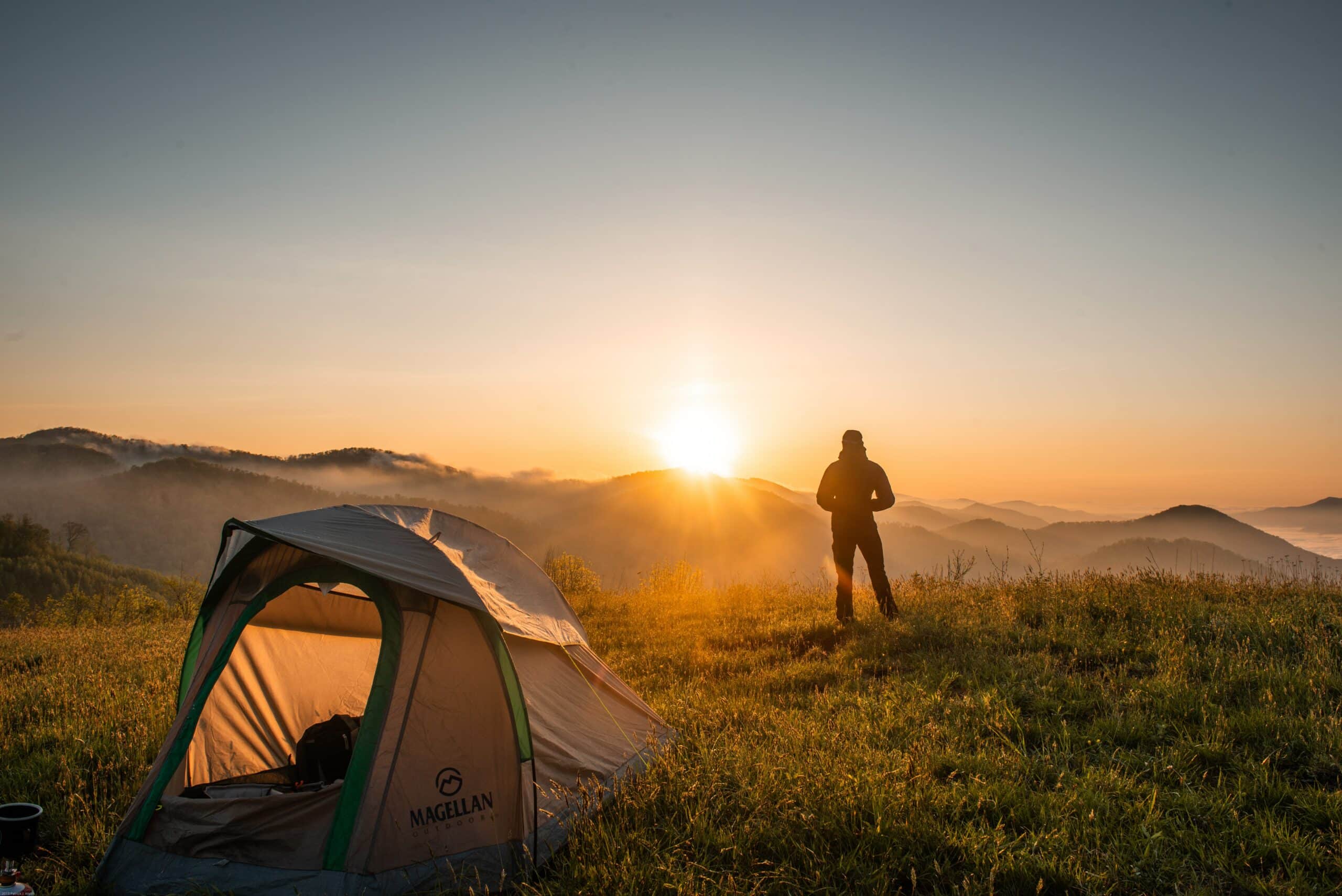
Glamping may offer a more private and secluded experience than designated campsites, with accommodations designed for couples or small groups. Still, some glamping sites might only look private from the first site. Chances are similar glamping houses are somewhere very close, within twenty meters’ reach.
It’s also crucial to note that camping and glamping can offer different levels of adventure. While camping can offer more adventurous activities such as backpacking, rock climbing, and kayaking, glamping is often designed for more leisurely activities such as yoga classes or spa services.
6. Activities
One of the most significant differences between camping and glamping is the range of activities available. Camping activities often involve traditional outdoor activities such as hiking, fishing, and building campfires. These activities are designed to immerse you in the natural world and provide an authentic wilderness experience.
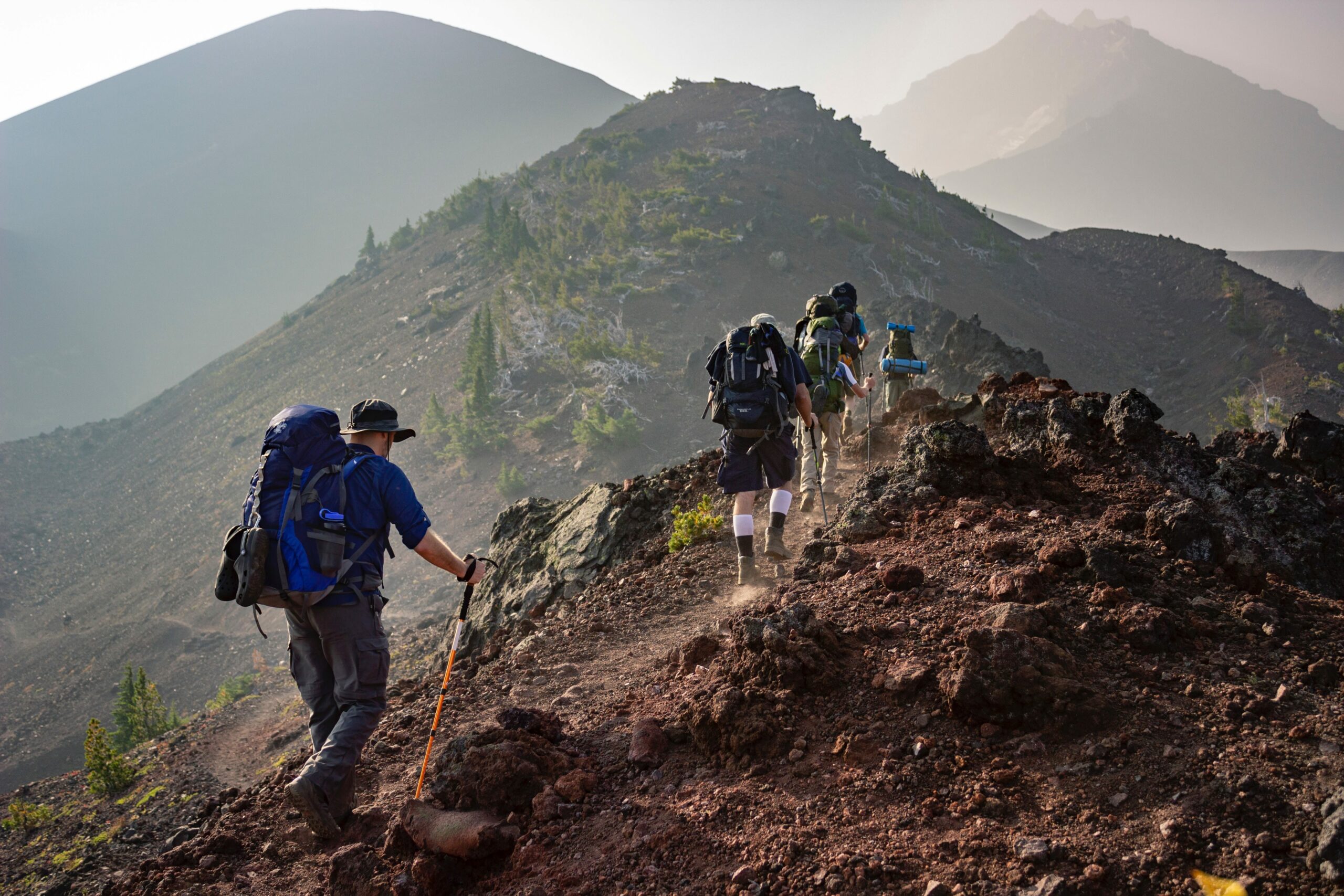
Glamping sites often offer a variety of additional activities, such as hot air balloon rides, spa treatments, and guided tours. These activities are designed to provide a more luxurious and pampered outdoor experience. They can also offer unique activities that aren’t typically found in traditional camping, such as horseback riding, kayaking, and yoga classes.
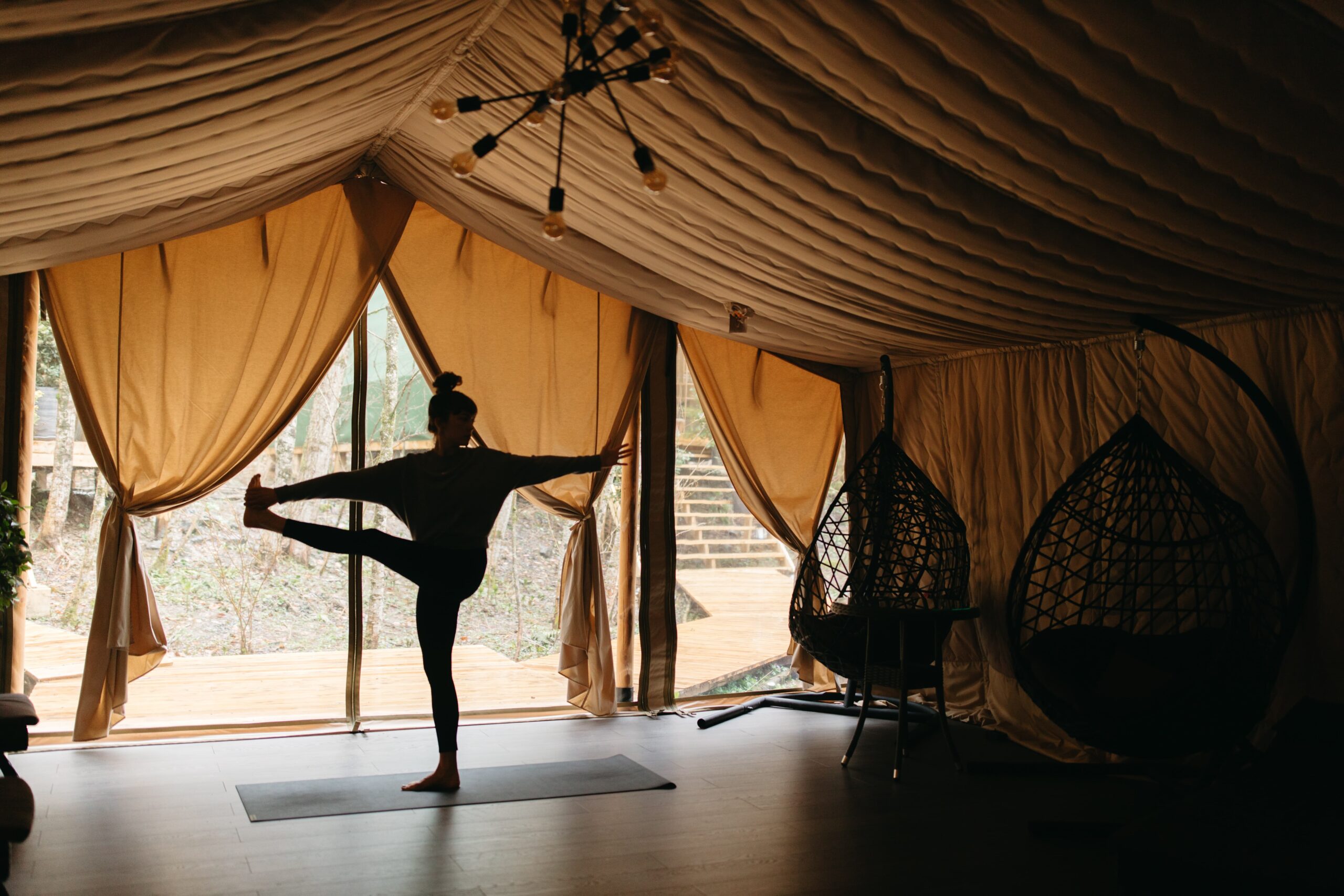
Another vital aspect to consider is the level of physical activity required. Camping is often more physically demanding, with hiking, fishing, and backpacking requiring a certain fitness level. Glamping is better for those looking for a more relaxed and leisurely experience.
7. Weather
Camping is generally more rugged and exposed to the elements. Campers will need to prepare for camping in the rain, wind, and other weather conditions that may arise. This means bringing appropriate gear and clothing, waterproofing a tent, and being prepared for inclement weather.
On the other hand, glamping sites have more amenities and protection from the elements. A glamping tent or yurt is often more insulated and weatherproof than traditional camping tents, and some even have air conditioning or heating. Glamping sites may also have covered areas or indoor spaces where guests can take shelter in case of bad weather.
It’s essential to consider the time of year and typical weather patterns of the location you plan to visit before deciding between camping and glamping. If you’re looking for a more traditional camping trip and don’t mind roughing it in potentially inclement weather, then camping may be the right choice for you.
However, if you don’t want to be exposed to the elements and want to enjoy the great outdoors regardless of the weather, glamping is a better option.
8. Safety
Safety is an important consideration when planning a camping or glamping trip. Both camping and glamping can take place in remote areas, and it’s essential to be aware of the potential hazards and risks.
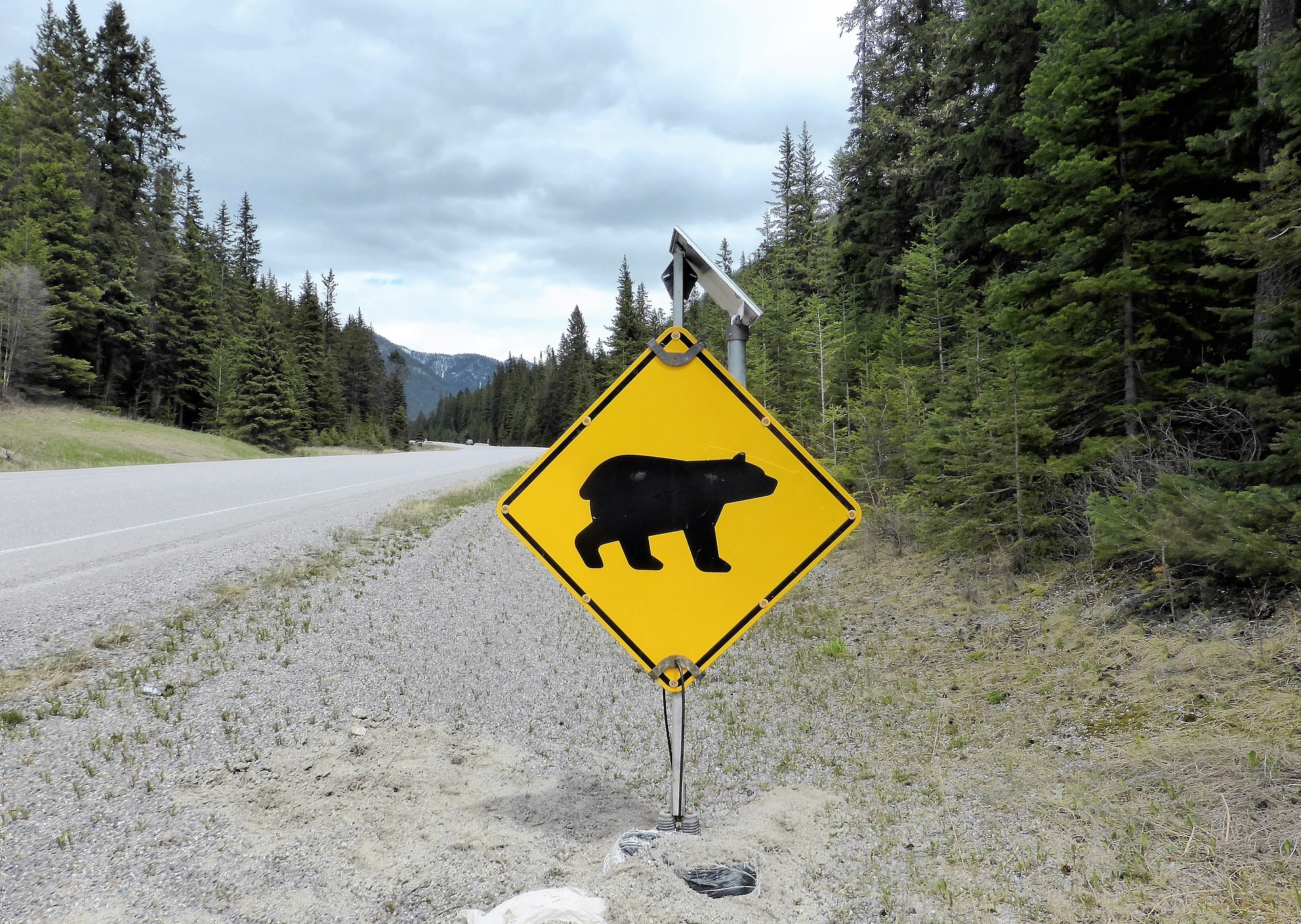
When camping, it’s important to be prepared for the weather and to have the right equipment. This includes a high-quality tent, a good sleeping bag and pad, and appropriate clothing and footwear. You should also be aware of the local weather forecast and be prepared for any changes.
Glamping accommodations are often more substantial than traditional camping tents. Most often, they’ll be okay for any weather, but it’s still wise to double-check with the owner. Also, you should be aware of the location of your glamping accommodations and the potential hazards, such as nearby bodies of water or wildlife.
Safety also includes being aware of and prepared for potential wildlife encounters. This includes bears, snakes, and other animals you can meet in the area.
It’s essential to know the regulations and guidelines for the site you’ll be visiting, as well as to have the right equipment, such as bear spray, and to be aware of the correct procedures in case of an encounter.
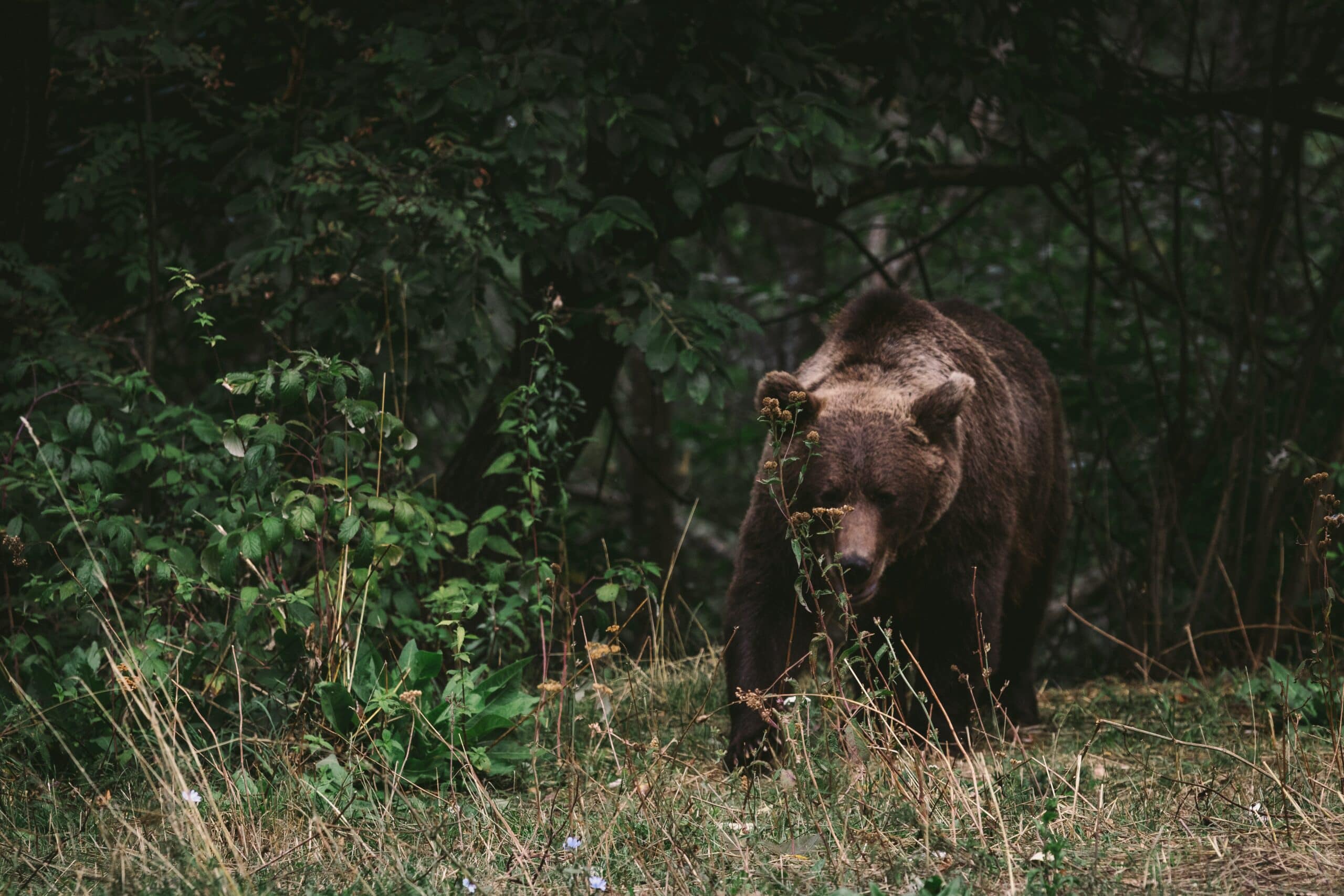
In addition to being prepared for the weather and wildlife, it’s also important to take camping safety precautions when it comes to cooking and campfires. Always make sure to follow the rules and regulations for campfires and never leave them unattended. Use designated fire rings and fully extinguish the fire before leaving the area. All in all, you must leave no trace behind while outdoors.
So, which one is for me?
Camping and glamping are both smart ways to enjoy the wild. While camping is a more traditional way to experience nature, glamping is a newer, more luxurious option to enjoy the outdoors.
Both options have their unique features and benefits, and the choice ultimately depends on what you’re looking for in an outdoor adventure. Whether you’re looking for a rustic camping experience or a luxurious getaway, camping and glamping have something for everyone. But hear us out – it’s absolutely worth trying them both.